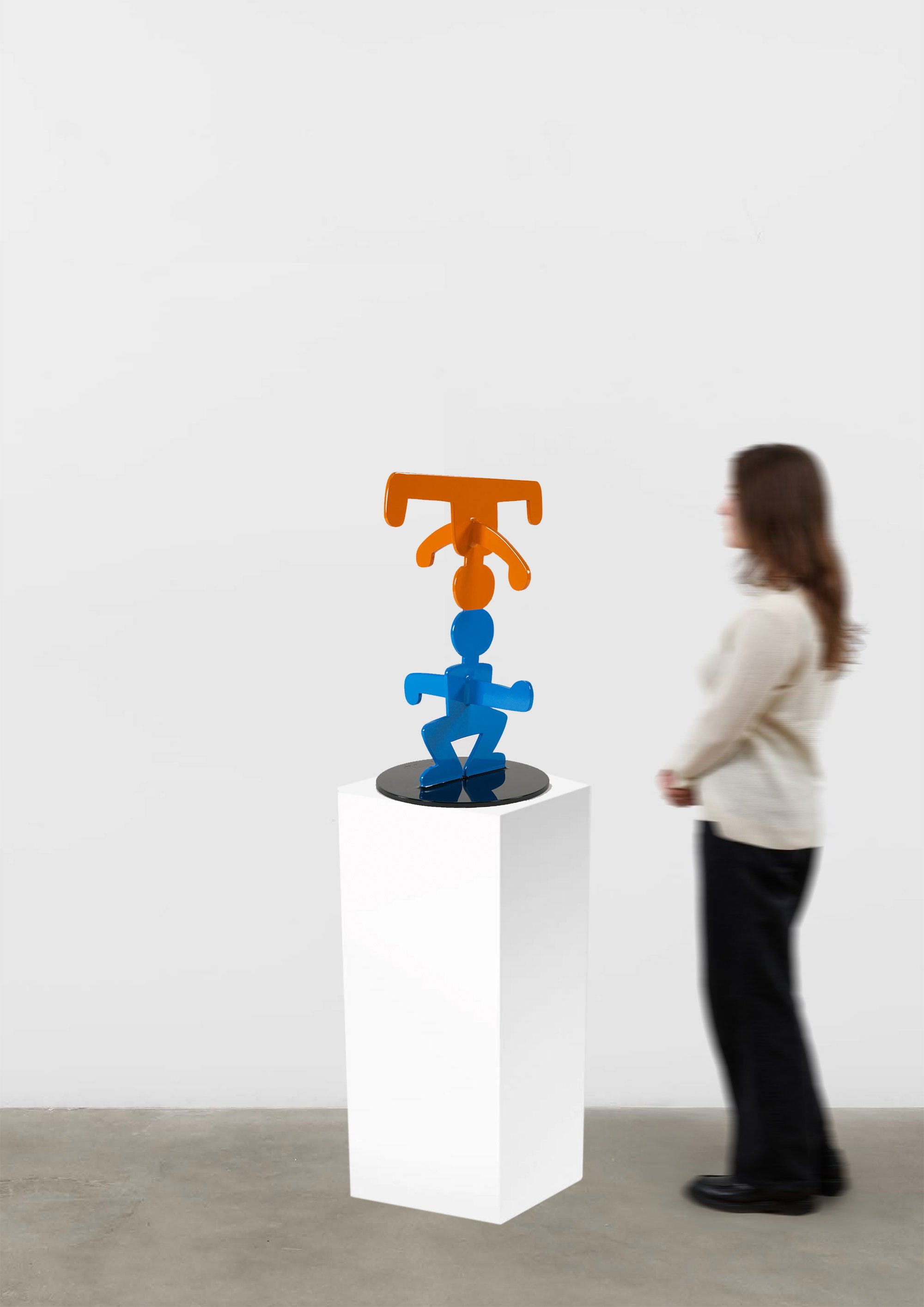Acrobats, 1986
24 x 15 ⅝ x 15 ⅝ inches
Edition of 10, plus 2 artist's proofs
incised with the artist's signature, dated, numbered and foundry mark 'K Haring 1986 acf’
Accompanied by a certificate of authenticity issued by the Estate of Keith Haring.
Provenance
Deitch Projects, New York
Acquired from the above, 2005
Private Collection, New York
Literature
E. Chapulie, ed., Keith Haring: l'art à la plage, Turin, 2005, page 39, another example reproduced.
London, Ben Brown Fine Arts, Keith Haring: Sculpture, Paintings and Works on Paper, 2005, pp. 17, 54, 57, another example reproduced.
Fondazione Triennale di Milano, The Keith Haring Show, 2006, no. 219, p. 366, another example reproduced.
Musée d’art contemporain de Lyon, Keith Haring, 2008, no. 200, p. 324, another example reproduced.
Exhibited
London, Ben Brown Fine Arts, Keith Haring: Sculpture, Paintings and Works on Paper, June-August, 2005, pp. 17, 54, 57, another example exhibited.
Fondazione Triennale di Milano, The Keith Haring Show, September, 2005-January, 2006, no. 219, p. 366, another example exhibited.
Musée d’art contemporain de Lyon, Keith Haring, February-June, 2008, no. 200, p. 324, another example exhibited.
Tokyo, Seiji Togo Memorial Sompo Japan Museum of Art, Global New Art, July-August 2011, another example exhibited.
Tokyo, Spiral Garden, Die Tanzende Bilder, August-September 2013, another example exhibited.
Matsumoto City Museum of Art, TAG-TEN, July-September 2014, another example exhibited.
The Museum of Fine Arts, Gifu, A Walk Around the Contemporary Art World After Paradigm Shift, February-May 2015, another example exhibited.







